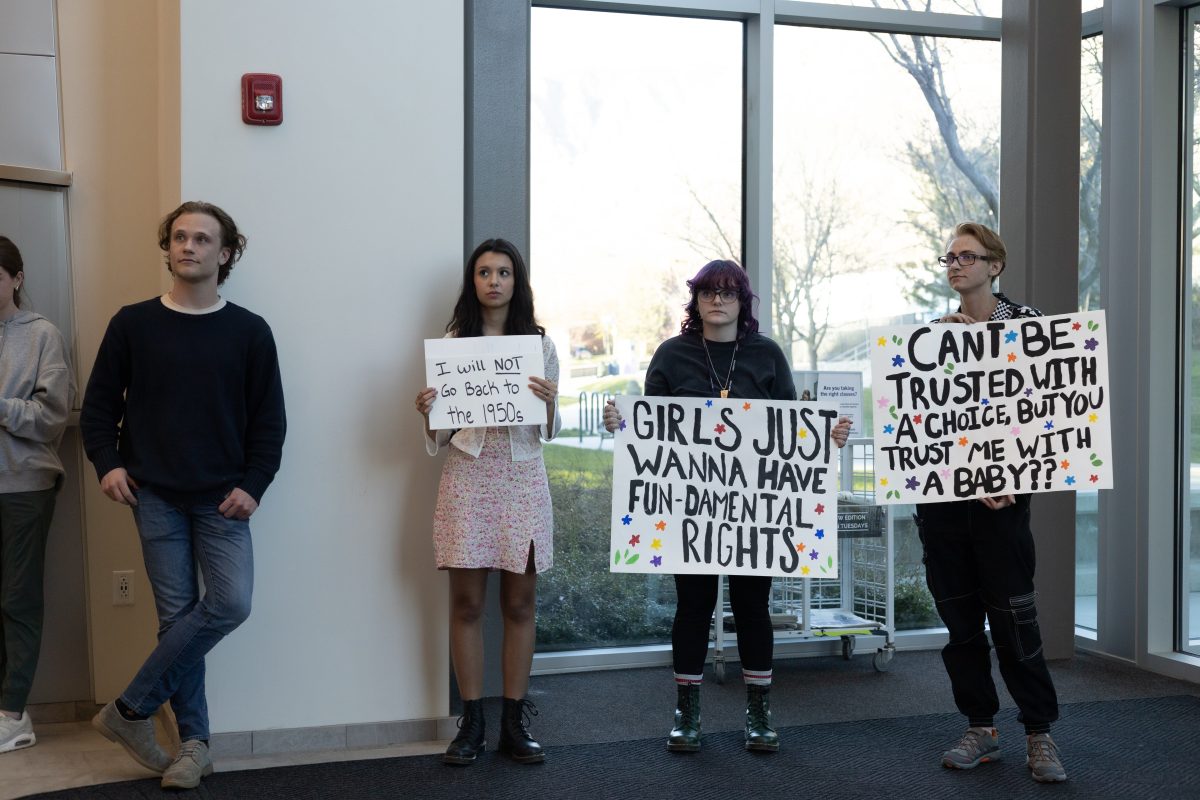 [/media-credit]
[/media-credit]
- Mile-and-a-half-long network of tunnels underneath Weber State University. Piping in the tunnels is currently undergoing an upgrade, projected to save WSU $100,000.
In the mile-and-a-half-long network of tunnels underneath Weber State University, a major conservation project, which is estimated to save WSU $100,000 per year in utility costs, is currently taking place. The tunnels contain over 7,000 feet long of piping that provide heat to the school.
Launched last summer, WSU’s Energy and Sustainability Office has coined this undertaking the “Steam Tunnel Project.” The mission is expected to take somewhere between three to five years to complete. Dustin Stump, who is a utility upgrade plumber for the office and one of the project’s leads, is in collaboration with an engineer from WHW Engineering and has been in charge of analyzing the pipes to determine the best ways to improve the energy efficiency and cost effectiveness of the heating.
“The system’s been neglected for years so we’re updating and getting it up to par,” Stump said.
Jennifer Bodine, WSU’s sustainability specialist, said the project will save close to 20,000 decatherms of natural gas annually.
“The main thing our office is engaged in is reinsulating the pipe with aerogel,” Bodine said.
The pipe is currently insulated with fiberglass insulation, which can be found in the ceilings of most houses. According to aerogel.org, the replacement insulation has a very low density and weight due to its composition of open-celled solid foam comprised of nano-structures with a porous quality of at least 50 percent. Also having low thermal conductivity and a water resistant barrier, aerogel has the capacity to block the escape of heat and moisture from steam.
“We also treat the water,” Stump said, “so when we lose steam, we’re losing treatment chemicals as well.”
Bodine said the heating process begins with on-campus boilers that produce steam, which then makes its way through the tunnels and subsequently to each building.
Jacob Cain, the manager for the Energy and Sustainability Office, said the project has also aided WSU’s energy conservation by shutting down the entire heating system from May until September.
“We’re saving about $20,000-$30,000 per month during the months when the system is completely shut down,” Cain said.
The pipe receives regular maintenance to ensure that it accomplishes this function with minimal performance issues. When the pipes are not in operation, Stump and other facilities management employees have been working on smaller repairs of the pipes.
“During the last shut down we changed out expansion joints, fixed leaks, re-insulated, just everything to improve the system,” Stump said. “Any savings are better than none.”
The steam tunnel isn’t the only way WSU is trying to improve energy saving on campus. The sustainability office is in the middle of upgrading all the lighting on campus with more energy-efficient lights. The current lighting in most of the campus buildings consists of light bulbs whose wavelengths fall into the yellow region of visible light. The electricians at WSU are working on replacing these with lower energy white lights which also help see colors more clearly. In addition to a different type of lighting, the sustainability office would like to see most lights on campus set to motion sensors in order to prevent energy wasting. Some of these changes have already occurred in places like the Stewart Library.
The Energy and Sustainability Office currently has three student interns working on various projects and are willing to utilize the skills of any major.
“If students have ideas for ways to see this campus change, ideas to make it greener, they can go to our website www.weber.edu/sustainability and submit those ideas,” Bodine said. “We can find you a project whether you’re a communications major interested in the outreach or whether you’re in the construction field and want to build sustainable buildings.”














